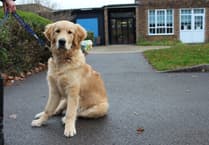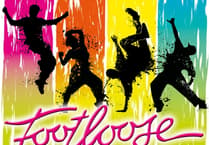HASLEMERE takes centre stage in a comprehensive account of the Covid pandemic just published by a former BBC journalist who lived in the town for more than 20 years.
Called 'Just drink the bleach', the book focuses on the three threats we all faced; the virus, the weird world of lockdown and the destabilising torrent of false-news.
The author, Tudor Lomas, left Haslemere for the last time in February 2020 and was then marooned in Amsterdam for 15 months at his girlfriend’s flat.
They monitored the progress of the pandemic from China to Northern Italy and then to the UK, where the first home-grown case turned up in Haslemere at the end of February, closing the health centre briefly.
This was fact following fiction, as the BBC TV programme Contagion in 2018 had covered an imaginary outbreak of deadly flu in the town, with the supposed super-spreader a well-known shop assistant at Miles in West Street.
Last year’s real coronavirus case in Haslemere was the first proof of direct infection within the UK meaning that "the silent killer was amongst us".
Lomas was inspired to write by the recent birth of his first grandchild, so that he would know what the world was like in those early years of his life.
He was also frustrated he’d been unable to find everyday, human accounts of Spanish flu from 100 years ago; he’d wanted to know "what it felt like at the time; what was known, what was feared, how understandings changed and how people handled it".
The author abandoned his globe-trotting life-style, much of it in the Middle East, and put himself in virtual quarantine because of his partner’s asthma.
In the end, he admits that lockdown was one of the most challenging and strangest journeys of his life.
Day by day from early on he collected cuttings and links setting out the developing story; the mistakes and misunderstandings as well as the heroism and the break-throughs.
The book is based around an Excel spreadsheet of over 600 such entries, as well as images, reactions and vivid dreams capturing the time of Covid.
His biggest surprise, in a masochistic sort of way, was the way he quite enjoyed the chance to take stock, reorganise things and make sense of the only pandemic any of us has experienced.
He learned to wash his hands properly, only to be told a few months later it probably wasn’t so important.
He was very sceptical about masks until the advice changed overnight when the experts realised the virus was airborne; the book explains why they were so slow.
It’s been well received, with reviewers calling it "extremely readable and profound", "a lovely and intimate account of the Covid world", "vivid and gripping", "an important ethnographic study" and "a fascinating and valuable resource for future generations".
Many people have used the lockdown to write a book; 'Just drink the bleach' had four aims.
Lomas wanted to share his spread-sheet of interesting links and developments; more than 600 of them from early 2020 to mid 2021. They chart the story, are the framework of the book, and they enabled him to spot trends.
Secondly, it focuses on all three challenges in the title, surviving Covid, the lockdown and false-news, and the connections with Trump’s exhortation to Just drink the bleach.
Thirdly, it was a chance to contact friends around the world to see how the virus had changed their lives. A few had relatives who died, some were damaged psychologically and financially but most evolved a new relationship with the world. They’re quoted in Chapter 27, ’How was it for you?’
Finally there’s the author’s newly-born grandson, who he’d only met the once, early last year when he was just four months old. Rather unusually, there are some blank pages at the end of the book, so anyone can add a few of their own thoughts and memories for their children or grandchildren.
For that reason, he gives lots of nuts and bolts examples of their everyday restricted life, and how they made the best of things.
They embraced the idea of the circular economy, making their own soap and creating a "country kitchen in the city". They couldn’t buy their usual Christmas ham from Mr Young in Chiddingfold, nor mead from the Lurgashall Winery nor great birthday cards from Between the Lines, so they discovered creative substitutes, made their own chutneys and Christmas puddings and found themselves far more "resilient than they’d even wanted to be".




